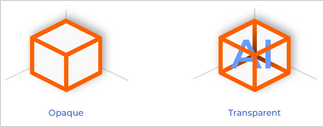
Model transparency
Introduction
AI has the potential to deliver significant benefits, but without proper controls, it can lead to regulatory issues, public relations problems, and liability.
In Prediction Studio, a senior Data Scientist can set the transparency thresholds within their business to enable users to deploy AI algorithms responsibly and safely. The Pega T-Switch™ settings help companies mitigate potential risks, maintain regulatory compliance, and responsibly provide differentiated experiences to their customers.
Video
Transcript
Companies in various industries use AI to make predictions and decisions based on those predictions. Best practices for using these models responsibly include ensuring that the decisions made through AI are transparent and interpretable to those affected by them. Responsible use is especially critical in industries such as finance and healthcare, where AI-driven decisions can have a significant impact on customers. Consumers and regulators demand a high level of trust and transparency in the models that drives these impactful decisions.
Predictive models can be either opaque, making it difficult or impossible to understand how a model reached a decision, or more transparent.
Various factors, such as the complexity and interpretability of the model determine the transparency of a model type.
Pega Customer Decision Hub™ includes the tools with which companies can employ AI models with confidence in their implementations and avoid ethical and regulatory issues. Prediction Studio has a dedicated page for model transparency.
Each model type that Pega Platform™ includes receives a recommended transparency score on a scale of 1 to 5, with 1 being the least transparent and 5 being the most transparent. For example, linear regression models are considered more transparent than neural network models because they are simpler and easier to interpret. The adaptive Bayesian models that drive the out-of-the-box Customer Decision Hub predictions are highly transparent as they include model monitoring,reporting and propensity explanations.
The required transparency may differ between business issues. Marketing might call for the use of more complex models. Still, when dealing with a business issue such as collections or a risk assessment, decisions must be highly explainable to both regulators and customers.
By default, all models are allowed for all business issues. In the development phase of a Pega Customer Decision Hub project, the project lead coordinates with stakeholders to collect the requirements for the transparency policy.
In Prediction Studio, a senior Data Scientist then implements the transparency policy by adjusting the business issue thresholds. Depending on the company policy, model techniques are marked as compliant or non-compliant for a specific business issue.
You have reached the end of this video. You have learned:
- How each model type that comes with Pega Platform has a recommended transparency score.
- How Prediction Studio reflects the model transparency policy of the company.
This Topic is available in the following Modules:
If you are having problems with your training, please review the Pega Academy Support FAQs.
Want to help us improve this content?

